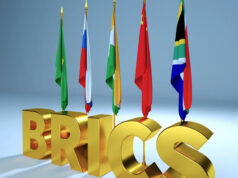Prototype Fast Breeder Reactor To Be Commissioned By Oct 2022 : Will Resolve Energy Security

Dr. Homi Bhabha, the father of the Indian nuclear programme, had envisioned a three-stage plan to resolve India’s energy Security. The first stage was the Pressurised Heavy Water Reactor (PHWR) which Indian nuclear scientists and engineers have mastered. The second stage is the PFBR technology.
The Prototype Fast Breeder Reactor (PFBR) being constructed by Bharatiya Nabhikiya Vidyut Nigam Limited (BHAVINI) is expected to get commissioned by October 2022. BHAVINI is a PSU under the DAE. On completion of commissioning, PFBR will add 500 MW of electrical power to the national grid.
Experts say to make nuclear energy sustainable, one sure shot way is to make fast breeder reactors mainstream. The Department of Atomic Energy is getting ready to commission this advanced ultra-modern indigenously designed and locally mastered fast breeder reactor
In the last three years, while commissioning activities of the various systems, structures and equipment of PFBR Was progressing, a large number of technical challenges as well as design inadequacies (owing to the first-of-a-kind status of the PFBR) were being encountered at each stage, thereby resulting in delay in commissioning
In a written reply to a question in the Rajya Sabha, Jitendra Singh, Minister of State in the Prime Minister’s Office, said presently there are technical issues which have resulted in delay in commissioning of the PFBR.
In the last three years, while commissioning activities of the various systems, structures and equipment of PFBR are progressing, a large number of technical challenges as well as design inadequacies (owing to the first-of-a-kind status of the PFBR) are being encountered at each stage, thereby resulting in delay in commissioning.
These issues are being attended in close coordination with designers and experts within the Department of Atomic Energy (DAE), he added.




